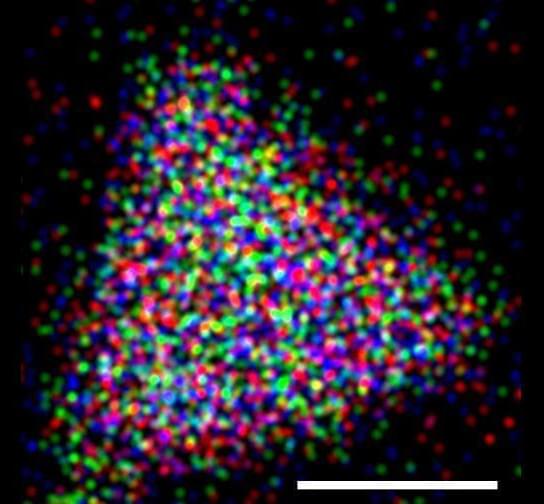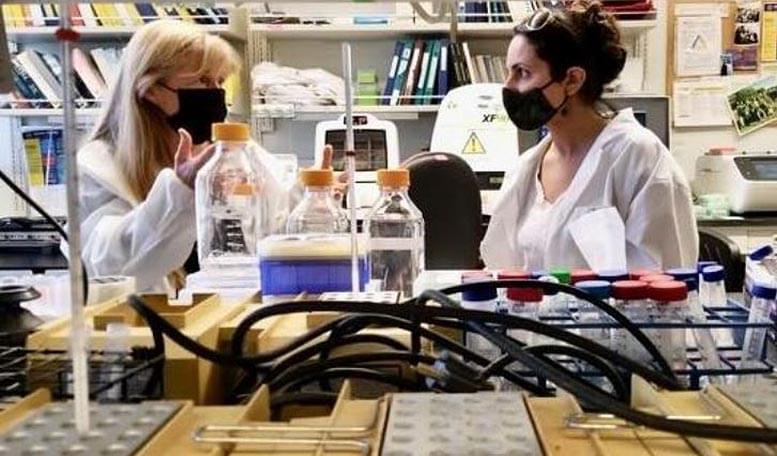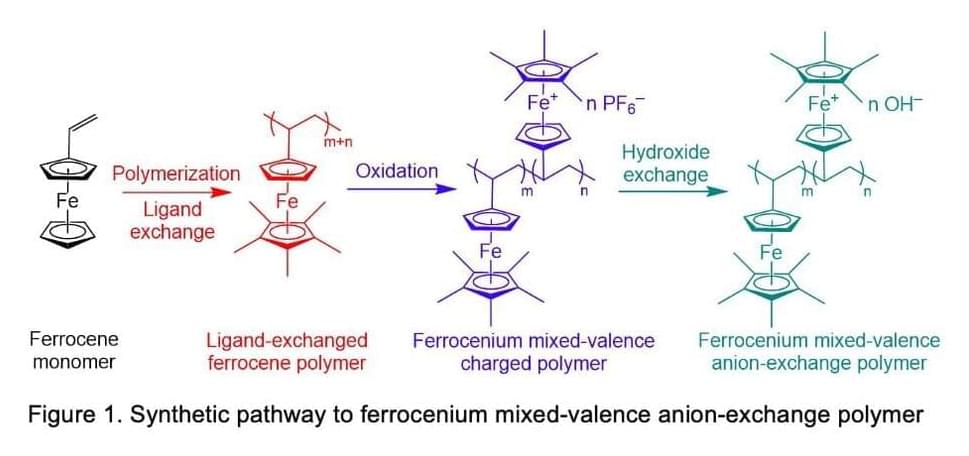Chalcogenide catalyses reduction of nitroaromatics used in everything from paints, plastics and pharmaceuticals.



The majority of commercial chemicals that enter the market in the United States every year have insufficient health and safety data. For pesticides, the U.S. Environmental Protection Agency uses a variety of techniques to fill data gaps in order to evaluate chemical hazard, exposure and risk. Nonetheless, public concern over the potential threat that these chemicals pose has grown in recent years, along with the realization that traditional animal-testing methods are not pragmatic by means of speed, economics or ethics. Now, researchers at the George Washington University have developed a new computational approach to rapidly screen pesticides for safety, performance and how long they will endure in the environment. Moreover, and most importantly, the new approach will aid in the design of next-generation molecules to develop safer pesticides.
“In many ways, our tool mimics computational drug discovery, in which vast libraries of chemical compounds are screened for their efficacy and then tweaked to make them even more potent against specific therapeutic targets,” Jakub Kostal, an assistant professor of chemistry at GW and principal investigator on the project, said. “Similarly, we use our systems-based approach to modify pesticides to make them less toxic and more degradable, while, at the same time, making sure they retain good performance. It’s a powerful tool for both industry and regulatory agencies that can help design new, safer analogs of existing commercial agrochemicals, and so protect human life, the environment and industry’s bottom line.”
Using their model, the team analyzed 700 pesticides from the EPA’s pesticide registry. The model considered a pesticide’s likely persistence or degradation in the environment over time, its safety, and how well it performed at killing, repelling or controlling the target problem.

Multiple lines of evidence — physical, chemical, and biological — must converge for scientists to conclude that alien life has been found. This article was posted on Big Think. Check it out here: https://bigthink.com/hard-science/alien-life-smoking-gun-evidence


Ernesto Di Maio is severely allergic to the yeast in leavened foods. “I have to go somewhere and hide because I will be fully covered with bumps and bubbles on the whole body,” he says. “It’s really brutal.”
Di Maio is a materials scientist at the University of Naples Federico II where he studies the formation of bubbles in polymers like polyurethane. He’s had to swear off bread and pizza, which can make outings in Italy a touch awkward. “It’s quite hard in Naples not to eat pizza,” he explains. “People would say, ‘Don’t you like pizza? Why are you having pasta? That’s strange.’”
So Di Maio put Iaccarino and another graduate student, Pietro Avallone, to work on a project to make pizza dough without yeast. The results of this scientific and culinary experiment are published in Tuesday’s edition of Physics of Fluids. Di Maio pulled in another colleague: chemical engineer Rossana Pasquino who studies the flow of materials, everything from toothpaste to ketchup to plastics. “Pizza [dough] is a funny material,” she explains, “because it flows, but it has to be also like rubber. It has to be elastic enough [when it’s cooked] to be perfect when you eat it.” — I had to post this because I love Pizza.
Bread geeks, take note! The new technique, developed in a lab in Naples, involves the smart application of materials science and physics to make airy, bubbly dough without fermentation.

With the onset of warmer temperatures, winter canola is breaking dormancy and army cutworms are now present in fields across Kansas. Significant army cutworm pressure has been observed in fields northwest of Caldwell in Sumner County.
Army cutworms feed aggressively and significant damage can occur in a short period of time. Smaller plants are most susceptible. The larvae feed on the leaf tissue, leaving the plants with a fed-on appearance (Figure 2). When minor feeding is observed, you may find leaves severed from the plant and laying on the soil surface. Where infestations are high, army cutworms will remove all leaf tissue, leaving only the base of the stem (Figure 3).
The economic threshold for chemical control is 1–2 cutworms per foot of row. Army cutworms behave nocturnally and typically spend the daylight hours below ground. When scouting, it is critical to dig in the soil around individual canola plants to find the larvae. However, it is not unusual to find army cutworm above ground when populations are high (Figure 1). The larvae are greenish-gray and often curl up into a C-shape.

Scientists astounded by performance of sustainable batteries with far-reaching implications for e-vehicles and devices.
Researchers at Bristol have developed high-performance sodium and potassium ion batteries using sustainably sourced cellulose.
Scientists at the Bristol Composites Institute have developed a novel controllable unidirectional ice-templating strategy which can tailor the electrochemical performances of next-generation post-lithium-ion batteries with sustainability and large-scale availability. The paper is published in the journal Advanced Functional Materials.

Technique allows researchers to toggle on individual genes that regulate cell growth, development, and function.
By combining CRISPR technology with a protein designed with artificial intelligence, it is possible to awaken individual dormant genes by disabling the chemical “off switches” that silence them. Researchers from the University of Washington School of Medicine in Seattle describe this finding in the journal Cell Reports.
The approach will allow researchers to understand the role individual genes play in normal cell growth and development, in aging, and in such diseases as cancer, said Shiri Levy, a postdoctoral fellow in UW Institute for Stem Cell and Regenerative Medicine (ISCRM) and the lead author of the paper.

Anion exchange membranes (AEMs) are semipermeable fuel cell components that can conduct anions but reject cations and gases. This enables the partition of substances that could chemically react with one another, thus allowing the cells to operate properly.
A team of researchers at Tianjin University in China have recently developed new types of AEMs that are based on a newly designed ferrocenium material. Their membranes, presented in a paper published in Nature Energy, were found to achieve highly promising results in terms of power output, durability, and ohmic resistance.
“As the oriented mixed-valence ferrocenium material developed in our study is entirely new for the AEM field, we encountered many difficulties and frustrations along the way,” Michael D. Guiver, one of the researchers who carried out the study, told TechXplore. “We spent a long research period and much effort, both experimentally and theoretically, to achieve these good outcomes. The whole process from initial conceptualization to final publication was convoluted, but fortunately successful.”
Devastating residential blazes and wildfires take a terrible toll in terms of deaths and injuries, as well as property loss. Today, researchers will report on a new type of coating that could limit the flammability of wood used in construction, potentially providing more time to escape fires and also curbing their spread. The environmentally friendly flame retardant could also be used for other flammable materials, such as textiles, polyurethane foam and 3D-printed parts.
The researchers will present their results today at the spring meeting of the American Chemical Society (ACS).
Home fires account for the majority of fire deaths and lead to billions of dollars in property damage every year, according to the National Fire Protection Association. Adding fire sprinklers and smoke detectors can help, but another approach is to make construction materials less flammable. That’s the goal of Thomas Kolibaba, Ph.D., who is developing a new coating for these materials. “This type of treatment, which could be deposited via dipping, spraying or pressure treatment, could make homes much safer,” he says. “The coating could reduce flame spread and smoke production, which could limit damage and give people more time to evacuate.” Unlike most current fire retardant treatments, its ingredients are environmentally benign, and it might also cost less, notes Jaime Grunlan, Ph.D., the project’s principal investigator.